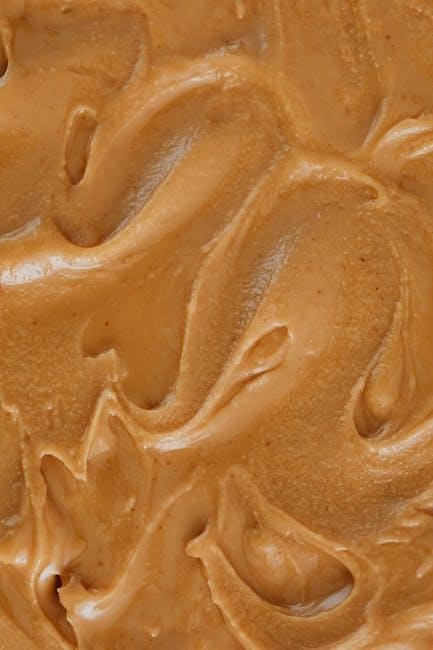Lipedema is a chronic fat disorder often mistaken for obesity, requiring a tailored dietary approach to manage symptoms and improve quality of life effectively.
What is Lipedema?

Lipedema is a chronic, heritable disorder characterized by abnormal fat deposition in the subcutaneous tissue, primarily affecting women. It involves a dysfunctional micro-lymphatic and vascular system, leading to pain, swelling, and difficulty in mobilizing fat. Often mistaken for obesity, lipedema is distinct, as it does not respond well to diet, exercise, or weight loss surgeries. The condition can severely impact mobility and mental health, necessitating tailored self-management strategies to alleviate symptoms and improve quality of life. Early diagnosis and understanding are crucial for effective long-term care.
The Role of Diet in Managing Lipedema Symptoms
Diet plays a crucial role in managing lipedema symptoms by reducing inflammation, improving circulation, and supporting overall metabolic health. A balanced diet focusing on whole, nutrient-dense foods helps alleviate pain and swelling. Incorporating omega-3 fatty acids and fiber can enhance fat metabolism and reduce inflammation. Hydration is also key, as it supports lymphatic function and reduces fluid retention. Avoiding processed foods, high carbohydrates, and triggers that worsen symptoms is essential. A tailored dietary approach not only helps manage lipedema but also promotes long-term well-being and improves mobility. By making informed food choices, individuals can better control their condition and enhance their quality of life.

Understanding the Lipedema Diet
The lipedema diet emphasizes whole, anti-inflammatory foods, omega-3s, and fiber, while minimizing processed carbs and promoting hydration to support lymphatic health and reduce fat deposits;
Key Principles of the Lipedema Diet
The lipedema diet focuses on reducing inflammation and supporting lymphatic health. Key principles include prioritizing whole, one-ingredient foods like fruits, vegetables, lean proteins, and healthy fats. Avoiding processed foods, sugars, and refined carbohydrates is crucial, as they can exacerbate symptoms. Incorporating omega-3 fatty acids and fiber-rich foods helps manage inflammation and improve digestion. Hydration is emphasized to support lymphatic flow, while minimizing sodium intake can reduce fluid retention. The diet also encourages mindful eating and portion control to maintain a healthy weight, which indirectly benefits lipedema management. These principles aim to create a balanced and sustainable eating plan tailored to individual needs;
Focus on Whole, One-Ingredient Foods
Emphasizing whole, one-ingredient foods is central to the lipedema diet. These foods, such as fruits, vegetables, lean meats, and whole grains, are naturally rich in nutrients and fiber. They help reduce inflammation and support lymphatic health, which is critical for managing lipedema symptoms. Avoiding processed and multi-ingredient foods minimizes exposure to harmful additives and sugars that can worsen inflammation. By focusing on whole foods, individuals can better regulate their metabolism, maintain a healthy weight, and improve overall well-being. This approach also encourages a more natural and sustainable way of eating, aligning with the body’s needs for optimal functioning and symptom relief.

Dietary Strategies for Managing Lipedema
Managing lipedema requires strategic dietary choices to reduce inflammation and support lymphatic health. Focus on anti-inflammatory foods, omega-3 fatty acids, and high-fiber options to alleviate symptoms effectively.
Incorporating Omega-3 Fatty Acids and Fiber
Incorporating omega-3 fatty acids and fiber into your diet is crucial for managing lipedema. Omega-3s, found in fatty fish like salmon and mackerel, help reduce inflammation, which can alleviate pain and swelling associated with lipedema. Fiber-rich foods, such as whole grains, fruits, and vegetables, promote digestive health and satiety, aiding in weight management. A diet high in these nutrients supports overall well-being and may help mitigate the progression of lipedema symptoms. Balancing these elements is key to a holistic approach to managing the condition effectively.
Hydration and Its Impact on Lipedema symptoms
Hydration plays a vital role in managing lipedema symptoms by supporting lymphatic function and reducing swelling. Drinking plenty of water helps maintain fluid balance, which can alleviate stiffness and inflammation. Additionally, staying hydrated aids in the transport of nutrients and removal of toxins, which is crucial for overall health. Herbal teas and low-sugar beverages are excellent choices, while sugary drinks should be avoided. While hydration alone cannot cure lipedema, it significantly contributes to symptom relief and complements a balanced diet focused on whole foods and anti-inflammatory nutrients.

Common Questions About the Lipedema Diet
Common questions about the lipedema diet include suitable food choices, symptom management, and the role of diet in treatment, emphasizing its importance in alleviating discomfort and inflammation.
Food Choices and Their Effect on Symptoms
Food choices significantly impact lipedema symptoms, with whole, one-ingredient foods often recommended to reduce inflammation and discomfort. Omega-3 fatty acids and high-fiber foods are beneficial, while processed and high-sugar options may worsen symptoms. Hydration is also crucial, as it supports lymphatic function and fat metabolism. Additionally, individuals with gluten sensitivity may find symptom relief by avoiding gluten-rich foods. A balanced diet focusing on anti-inflammatory and nutrient-dense foods can help manage lipedema more effectively, improving overall well-being and reducing discomfort associated with the condition.
Addressing Gluten Sensitivity in the Lipedema Diet
For individuals with lipedema and gluten sensitivity, adopting a gluten-free diet may help alleviate symptoms. Gluten sensitivity can exacerbate inflammation, potentially worsening lipedema discomfort. Focus on gluten-free, whole foods like fruits, vegetables, lean proteins, and gluten-free grains to reduce inflammation and improve digestion. However, it’s important to note that gluten sensitivity is not universal in lipedema patients, and its impact may vary. Consulting a healthcare professional to tailor a gluten-free diet can provide personalized relief and support overall well-being while managing lipedema symptoms effectively.

Lipedema and Obesity: Dietary Considerations
Lipedema often coexists with obesity, requiring a balanced diet to manage symptoms. While diet aids overall health, it has limited impact on lipedema-specific fat reduction.
The Comorbidity of Lipedema and Obesity
Lipedema frequently coexists with obesity, impacting up to 85-88% of patients. This comorbidity presents unique challenges, as managing one condition often affects the other. While diet and exercise are crucial for overall health, they have limited impact on lipedema-specific fat. A balanced diet can help reduce obesity-related risks but may not directly improve lipedema symptoms. Understanding this dual condition is essential for developing effective treatment plans that address both disorders simultaneously, ensuring patients receive comprehensive care tailored to their needs.
Limitations of Diet and Exercise in Treating Lipedema
While diet and exercise are essential for overall health, they have limited effectiveness in treating lipedema. Lipedema fat is resistant to traditional weight-loss methods, as it is not metabolized like regular adipose tissue. A healthy diet can improve general well-being and reduce comorbidities like obesity, but it does not directly reduce lipedema-specific fat. Exercise, particularly lymphatic-friendly activities, may alleviate symptoms but does not eliminate the condition. Patients often require additional interventions, such as surgery or compression therapy, to manage lipedema effectively, highlighting the need for a multi-faceted treatment approach beyond lifestyle changes alone.

Tailored Interventions and Self-Management
Tailored interventions and self-management strategies are crucial for lipedema, focusing on personalized dietary approaches and community support to enhance long-term symptom management and overall well-being.
The Need for Personalized Dietary Approaches
Personalized dietary approaches are essential for managing lipedema, as individual responses to food and metabolic differences vary widely. A tailored diet helps address specific symptoms and lifestyle needs, ensuring optimal outcomes. By focusing on whole, nutrient-dense foods and avoiding triggers, individuals can better control inflammation and fat accumulation. Regular consultation with healthcare providers or dietitians ensures the diet remains aligned with personal health goals, fostering long-term success and improved well-being.
Community Support and Awareness (e.g., Lipoedema Awareness Month)
Community support and awareness are vital for individuals with lipedema, fostering a sense of connection and understanding. June is recognized as Lipoedema Awareness Month, a time to educate and raise visibility about this condition. Engaging with support groups, both online and in-person, helps individuals share experiences and strategies for managing symptoms. Awareness campaigns and events empower those affected to advocate for themselves and others, reducing feelings of isolation. By fostering a collective effort, the community can promote education, research, and advocacy, ultimately improving the lives of those with lipedema.
A well-structured diet plays a crucial role in managing lipedema, promoting long-term well-being by reducing symptoms and improving overall health through tailored nutritional strategies and lifestyle adjustments effectively.
The lipedema diet emphasizes whole, one-ingredient foods rich in omega-3 fatty acids and fiber, promoting inflammation reduction and symptom alleviation. Hydration is crucial for fluid balance and tissue health. Avoiding processed foods and managing gluten sensitivity can further enhance benefits. While diet alone cannot cure lipedema, it significantly supports overall well-being and symptom management when combined with other therapies. Tailored dietary approaches are essential for maximizing individual benefits and improving long-term quality of life effectively.
Encouraging Healthy Lifestyle Changes for Long-Term Wellbeing
Adopting a balanced diet is just the first step; combining it with regular exercise, stress management, and adequate sleep fosters long-term wellbeing. Gentle exercises like swimming or yoga can improve mobility without exacerbating symptoms. Stress reduction techniques, such as meditation, help minimize inflammation and emotional strain; Prioritizing sleep and maintaining a consistent routine are also vital for overall health. Community support, especially during Lipoedema Awareness Month, empowers individuals to stay motivated and informed. By integrating these practices, individuals with lipedema can achieve a more active, confident, and healthier lifestyle.